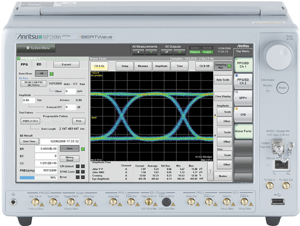Although optical networks have been in existence for many years now, optical communication technologies are continuously evolving. Keeping in sync, optical testing is looking for high-speed, high-performance, all-in-one type and accurate test and measurement solutions that are upgradeable to 40G or 100G in the future
SHWETA DHADIWAL BAID

APRIL 2011: The need for high-speed connectivity and higher capacity will never cease. The launch of 3G and LTE has fuelled this need for high-speed and high-bandwidth backhaul. To meet this demand, optical networks based on fibre-optics technology provide a stable and upgradable system.
Optical systems have already been dominating the core networks. “Due to their reliability and bandwidth offering, optical networks are making inroads to support the passive optical network technologies in the access networks. Many enterprise networks and residential customers are now connected to core networks via optical networks,” shares Mohmedsaeed Mombasawala, general manager-applications, Agilent Technologies.
The increased service needs based on Triple Play in the user segment are fuelling the usage of optical-fibre systems in access networks as well.
There are two kinds of test and measurement requirements for optical communications: Optical network testing during installation and commission of networks, and testing for R&D and manufacturing. From development to deployment, the testing needs are very intensive and knowledge-oriented. Optical testing is looking for high-speed, high-performance, all-in-one type and accurate test and measurement solutions that are upgradeable to 40G or 100G in the future.
Optical communication technologies
An optical communications system is based on the priciple of transmission of a signal through an optical fibre to a distant receiver. The electrical signal is converted into optical at the transmitter and back into the original electrical signal at the receiver.
Russel Taws, market manager, JDSU, explains, “The fibre is classified into multi-mode and single-mode based on the way in which the light travels through it. Multi-mode fibres are used to transmit data over relatively short distances (200 km) and are used in all telecommunication systems for voice, data, video and mobile.”
[stextbox id=”info” caption=”Basic tests in optical communications”]1. Inspection and cleaning
2. End-to-end optical link loss
3. Rate of attenuation per unit length
4. Attenuation contribution to splices, connectors and couplers (events)
5. Length of the fibre or distance to an event
6. Linearity of fibre loss per unit length (attenuation discontinuities)
7. Reflectance or optical return loss
8. Chromatic dispersion
9. Polarisation-mode dispersion
10. Attenuation profile[/stextbox]

“The capacity of a single-mode fibre communication system may be further increased by injecting multiple signals of slightly differing wavelengths. This is called wavelength-division multiplexing (WDM) and is an important technique to increase the system bandwidth,” explains Taws.
Fibre-optic networking is more than a decade old and existed alongwith synchronous optical networking (SONET) and synchronous digital hierarchy (SDH), which today goes up to over 10 GB.
In one of the interviews, Kumar N. Sivarajan, co-founder and chief technology officer, Tejas Networks, states that the recent development is dense wavelength-division multiplexing (DWDM), which includes the use of multiple frequencies or wavelengths for different signals from the infrared light portion of the optical spectrum. Today, optical networking has become synonymous with DWDM.
Optical testing challenges
Optical communications is a fairly stable technology with established processes and best practices. Therefore the initial ramp-up needed for manpower to operate this technology is also well-defined and easily available.
However, optical communication faces other types of issues. Madhukar Tripathi, manager-telecom segment, Anritsu, shares, “The major disadvantage is that it is very expensive to construct the fibre-optics for optical networks and to join the fibre-optical cables as compared to the copper cables.”
Mombasawala says, “The laying of optical cables, securing rights-of-way, frequent maintenance due to dig-outs and the necessity of the backup routes for network resiliency are some of the challenges faced in optical networks.”
“The testing of optical networks during installation and commissioning includes link verification, link characterisation, system tests like bit error rate (BER) measurements, alarms and transmission power measurements. This type of testing is very repetitive and needs standard tools like optical-time domain reflectometer (OTDR), BER meter and power meter, while R&D tests demand sound technical knowledge and skills to test the systems,” he adds.
Expressing his views on the challenges faced in India, Taws says, “One of the main challenges we have in India is ensuring that the optical connections are free of dust and dirt during installation and maintenance. Contamination is the main reason for trouble in optical networks. A single particle mated into the core of a fibre can cause significant back reflection, insertion loss and equipment damage. Visual inspection is the only way to determine whether fibre connectors are truly clean before mating them.”






